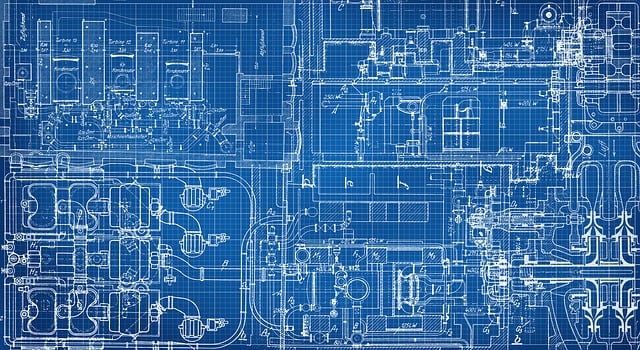Upgrading plumbing systems offers a choice between PEX (cross-linked polyethylene) and copper piping, each with distinct advantages. PEX excels in flexibility, corrosion resistance, easy installation, and freeze resistance, ideal for complex layouts and retrofits. Copper, a traditional standard, boasts superior thermal conductivity, durability, and compatibility with water treatment chemicals, minimizing leak risks over time. The best choice depends on climate, budget, and personal needs, ensuring reliable performance with both materials, as guided by professional plumbers.
Considering an upgrade to your plumbing system? PEX (cross-linked polyethylene) and copper piping are top choices, each with unique advantages. This guide explores the durability and efficiency benefits of PEX, as well as the enduring reliability of copper. We’ll help you navigate the decision by highlighting key factors to consider for both residential and commercial spaces. Consult a professional plumber to determine the best upgrade path for your needs.
- Understanding PEX and Copper Piping: Materials and Durability Comparisons
- Advantages of Upgrading to PEX for Longevity and Efficiency
- Copper's Enduring Legacy: Why It Still Has Its Place in Plumbing Systems
- Choosing the Right Upgrade Path: Factors to Consider for Your Home or Commercial Space
Understanding PEX and Copper Piping: Materials and Durability Comparisons

When considering upgrades for your plumbing system, understanding the differences between PEX and copper piping is key. Both materials have their merits when it comes to durability and performance, but each has unique characteristics that can impact your decision. Plumbers often recommend PEX (cross-linked polyethylene) for its flexibility, corrosion resistance, and ease of installation. This material can bend around tight spaces, making it ideal for retrofits and complex layouts. Moreover, PEX is less prone to freezing issues compared to copper, a benefit in colder climates.
On the other hand, copper piping has long been considered the standard due to its excellent thermal conductivity and resistance to corrosion. Copper is highly durable and can last for decades with proper maintenance. Plumbers appreciate copper’s ability to handle high-pressure systems and its compatibility with various water treatment chemicals. While more rigid than PEX, copper piping requires fewer connections, potentially reducing the risk of leaks over time. The choice between PEX and copper ultimately depends on factors like climate, budget, and specific plumbing needs, as both materials offer reliable performance for different scenarios.
Advantages of Upgrading to PEX for Longevity and Efficiency

Upgrading to PEX (cross-linked polyethylene) piping offers several advantages over traditional copper piping, especially in terms of longevity and efficiency. PEX is known for its exceptional durability, resisting corrosion and scaling better than copper. This makes it less prone to leaks and burst pipes, a common issue with copper systems, particularly in freezing climates. Plumbers can save time and money on repairs and replacements with PEX, as it’s more flexible, easier to install, and requires fewer fittings.
PEX also excels in energy efficiency. Its insulating properties help maintain water temperature, reducing heat loss and the need for constant hot water heaters. This not only saves energy but also lowers utility bills for homeowners. Moreover, PEX’s longevity reduces the frequency of plumbing upgrades, making it a cost-effective choice in the long run.
Copper's Enduring Legacy: Why It Still Has Its Place in Plumbing Systems

Copper has been a trusted material in plumbing systems for centuries, and its enduring legacy is well-deserved. Despite the rise of modern alternatives like PEX (Cross-linked Polyethylene), copper remains a preferred choice for many reasons. One of its most notable strengths is durability; copper pipes can last for decades with proper maintenance, making them an economical investment for homeowners and commercial properties alike. This longevity is attributed to copper’s natural resistance to corrosion, even in the harshest conditions. Unlike some synthetic materials, copper doesn’t degrade or weaken over time, ensuring a consistent and reliable plumbing network.
Plumbers often appreciate copper’s ease of installation and adaptability. It’s a versatile material that can be bent and shaped without compromising its structural integrity, making it ideal for navigating tight spaces and unique layouts. Furthermore, copper is highly compatible with various fixtures and appliances, ensuring seamless integration within a building’s plumbing system. Its timeless aesthetic appeal also adds value to properties, making it a desirable choice for both retrofits and new constructions.
Choosing the Right Upgrade Path: Factors to Consider for Your Home or Commercial Space

When considering piping upgrades, whether for a home or commercial property, selecting between PEX (cross-linked polyethylene) and copper is a significant decision. Both have their merits, but different projects may call for one over the other. Plumbers often weigh factors like cost, lifespan, corrosion resistance, ease of installation, and temperature tolerance. For instance, PEX is more flexible, making it easier to route through tight spaces and connect to fixtures without many joints, which can reduce potential leak points. Copper, on the other hand, boasts superior durability, especially in extreme temperatures, and its natural antibacterial properties make it a preferred choice for potable water lines.
The right upgrade path depends on your specific needs and budget. A plumber can help assess factors like existing infrastructure, future use of the space, and local building codes to determine whether PEX or copper is more suitable. They can also provide insights into installation time and costs, ensuring you make an informed decision that aligns with your project goals.
When deciding between PEX and copper piping upgrades, both offer durability advantages. PEX excels in flexibility, ease of installation, and resistance to freezing, making it ideal for modern homes and efficient plumbing systems. Copper, a timeless choice, remains valuable for its longevity, corrosion resistance, and compatibility with various fixtures. A plumber’s expertise is crucial in navigating these options, ensuring the best upgrade path considers your specific needs, climate, and budget. Investing in quality piping will safeguard your property against leaks and water damage for years to come.
